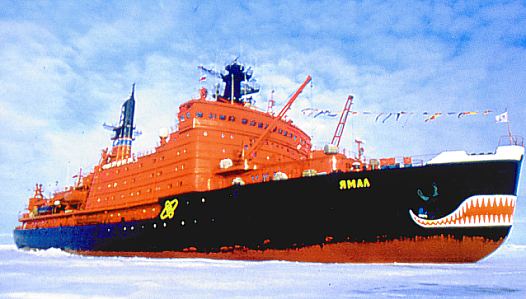

Posted on 08/25/2008 5:22:48 PM PDT by SandRat
WASHINGTON, Aug. 25, 2008 – The Coast Guard is testing and compiling initial lessons learned from its ongoing Arctic operations, a senior officer said last week.
“It became obvious to me 18 months to two years ago that with the retreat of the multiyear polar sea ice, the Coast Guard was going to have to do more than it had in the past to provide maritime safety and security to northern and western Alaska, the Arctic Ocean and the Beaufort Sea,” Coast Guard Rear Adm. Arthur E. Brooks, commander of the 17th Coast Guard District, told bloggers and online journalists during a teleconference on Aug. 21.
If the mission expands to include northern and western Alaska and the Chukchi and Beaufort Seas in the Arctic, the Coast Guard ultimately would need more units and more people to successfully carry out operations in the harsh environment, though this would require a national decision, Brooks said.
“Through the spring and summer, we’ve been conducting a test bed for moving various Coast Guard units into the Arctic environment and determining their suitability for service in northern Alaska,” the admiral said.
Brooks added that the Coast Guard recently completed tests in Barrow, Alaska, for a forward operation location with two small boats and two H-65 helicopters; conducted a security exercise in Prudhoe Bay, and deployed a 378-foot high-endurance cutter to the North Slope.
“The biggest hazard, frankly, is ensuring that we avoid sea ice,” Brooks said. “And the second issue is [that] helicopter operations will be constrained, because in the Arctic … we have a concern with the ability to self-rescue.”
Brooks added that the lack of organic capability is one of the hindrances to operating in the harsh environment of the Arctic.
“There’s no infrastructure,” he said. “So, when you start launching helicopters [and] sending boats over the horizon, you now have to worry about how do you get them back?”
Another problem when working in the Arctic, the admiral said, is not having the background information.
“For example, if I have a ship of a certain size, with a certain crew and a certain cargo, inbound to New York at Ambrose, we understand what that means because we know the infrastructure,” he explained. “We know the traffic patterns. We know past history with the company. We know all the surrounding information for a vessel contact in much of the world.”
Brooks said the Coast Guard is learning that the Arctic is a unique place that requires very expensive tools and a lot more infrastructure than it currently enjoys. For example, polar icebreakers, which the Coast Guard used for the first time in April in the north Bering Sea, are necessary.
“In order to project a surface presence in that part of the world for any extended period of time, [we] very quickly realize that because of the weather conditions -- meaning that even though it’s more ice–free than ever, there’s still ice much of the year -- and the distances involved, these places are very far away,” he said. “It requires polar icebreakers.”
Brooks added that there is still time to prepare the infrastructure, because ship traffic is low now through the Bering Strait and along the North Slope.
“The issue of the full-function operations -- the requirement to do everything we do in southern Alaska in northern Alaska, at least seasonally -- will take several years, perhaps up to five years to ramp up to a capability,” Brooks said.
Enhanced marine safety and security on newly opened waterways is one of the main reasons for the effort, the admiral said.
"And, that's why we're pushing forward, to be positioned and to be prepared to ensure that we don't have a Titanic of the north, like the motor vessel Explorer in Antarctica last November," he said. The Canadian cruise ship sank after hitting submerged ice. All 154 people aboard were rescued.
(Navy Lt. Jennifer Cragg works in the New Media directorate of the Defense Media Activity.)


"Welcome Home!"
No kiddin. The Rooskies own this detail.
One reason is alluded to in the posted article, in that you bring your infrastructure with you when you venture beyond the horizon in the Arctic, if you can. The other is the more weight, the better, so they don't worry about fuel consumption being eaten up by their massive weight. And last but not least, they have many different laboratories on board and personnel to run them. These things are a big operation with few range limitations...
Thanks for the info.
CG Ping
Disclaimer: Opinions posted on Free Republic are those of the individual posters and do not necessarily represent the opinion of Free Republic or its management. All materials posted herein are protected by copyright law and the exemption for fair use of copyrighted works.